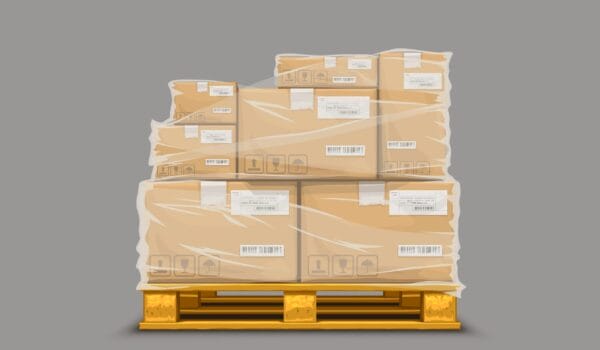Did you know that the National Motor Freight Traffic Association, Inc. (NMFTA)™ has an interpretations team available to help carriers, shippers, and 3PLs determine the correct classification for any given piece of freight?
In fact, lately, our team has been quite busy, as we’ve seen a 28 percent increase in the number of inquiries for interpretation help over the past year.
The increase in requests stems from several factors, such as recent changes to the National Motor Freight Classification (NMFC)® and the growing general knowledge that the service is available.
“I’ve seen an increase of people saying, ‘We used this item number in the past, but because the NMFC is being modernized, that item number has either changed or it’s now in reference to something else,’” said Ashley Gencarelli, a seven-year veteran of the interpretations team at NMFTA. “Participants who have historically used the same singular item number for everything now have to change it up, and they need our assistance.”
Nearly 80 percent of interpretation requests come from carriers, which keeps pace with historical trends. The remainder of the requests are made by 3PLs and shippers, who are increasingly aware of the available interpretation help as the NMFTA has intensified its efforts to promote the service.
Victor Mata, who recently joined the interpretations team after a career in the LTL carrier field, noted that those requesting interpretations have improved in providing the required details over the past few years.
“NMFTA requests more detailed documentation to be provided for interpretations which means that the vast majority of the requests we receive have enough information for us to make a determination on what’s being classified,” Mata said.
Precise Classifications Benefit Everyone
Occasionally the team sees a series of requests in rapid succession on the same item, coming from multiple parties. This often happens when parties wish to obtain a more favorable classification to reduce shipping costs, and to determine if they will switch to different carriers to achieve this.
We understand the need to save money on shipping, but it’s important to know: Correctly classifying freight benefits everyone, and in almost all cases it saves everyone the risk of much greater costs.
When an item is correctly classified, the shipper is protected from liability risks in the event an item is damaged. Because the classification offers guidance on packaging, it can prevent a situation in which an item is otherwise correctly classified, but still creates a liability risk because of inappropriate packaging.
The NMFC is designed to ensure that freight is packaged properly and transported safely at every step of the LTL shipping lifecycle, and that everyone’s costs and risks are factored into the pricing as well as the handling. The shippers benefit from this more than anyone because it’s their freight that needs to get from place to place safely. Empowering carriers with the information and the financial incentives to make that happen is the best thing that can happen for shippers.
So, while the Freight Classification Development Council (FCDC) is always open to proposals to make changes to the NMFC, we encourage everyone to recognize that the correct classifications benefit everyone.
The Good, the Bad and . . . the Ugly?
The term “ugly freight” is not about aesthetics. It’s about items that are shaped or configured in such a way that they can’t easily be handled or stowed. The FCDC takes these unusual shapes and configurations into account when classifying freight.
“Ugly freight comes in all shapes and sizes, and it’s just tough to handle on the dock,” Mata said. “For example, of course most docks have forklifts, so what’s considered ugly is something you cannot have someone just jump on a forklift and move. These dock workers make it look easy, but if you were to ask just anyone to move that freight, it’s not easy. It could be freight that doesn’t have a square base or freight that’s off balance meaning one side weighs more than the other.”
Jeff Cooper, manager of interpretations at NMFTA, said ugly freight can present serious complications – enough to shut down dock operations if loading and unloading is especially challenging.
Gencarelli explained some of the impacts such items can have on the full load.
“An ugly piece of freight could be three feet high, and you can’t stack anything on top of it,” said Larissa Franklin, packaging development manager at NMFTA. “Since carriers are selling space in their trailer, that becomes an issue. Also, ugly freight often doesn’t have the best packaging. Sometimes, people try to save money by using less-than-adequate packaging. However, this approach can end up costing them more if the product is damaged.”
The NMFTA wants to educate carriers, shippers, and 3PLs as much as possible about freight classification, which is why we offer frequent webinars on the subject.
Freight Classification Webinar Series 3, a four-part series, will begin August 6. Note that webinar attendees receive a 20% discount on one ClassIT® subscription and applies to new ClassIT subscribers only. ClassIT is the digital version of the NMFC book.
A three-part series on packaging follows in May, with another four-part series on freight classification coming in August.
To connect with the team, call 703-838-1810 or email interpretations@nmfta.org.






